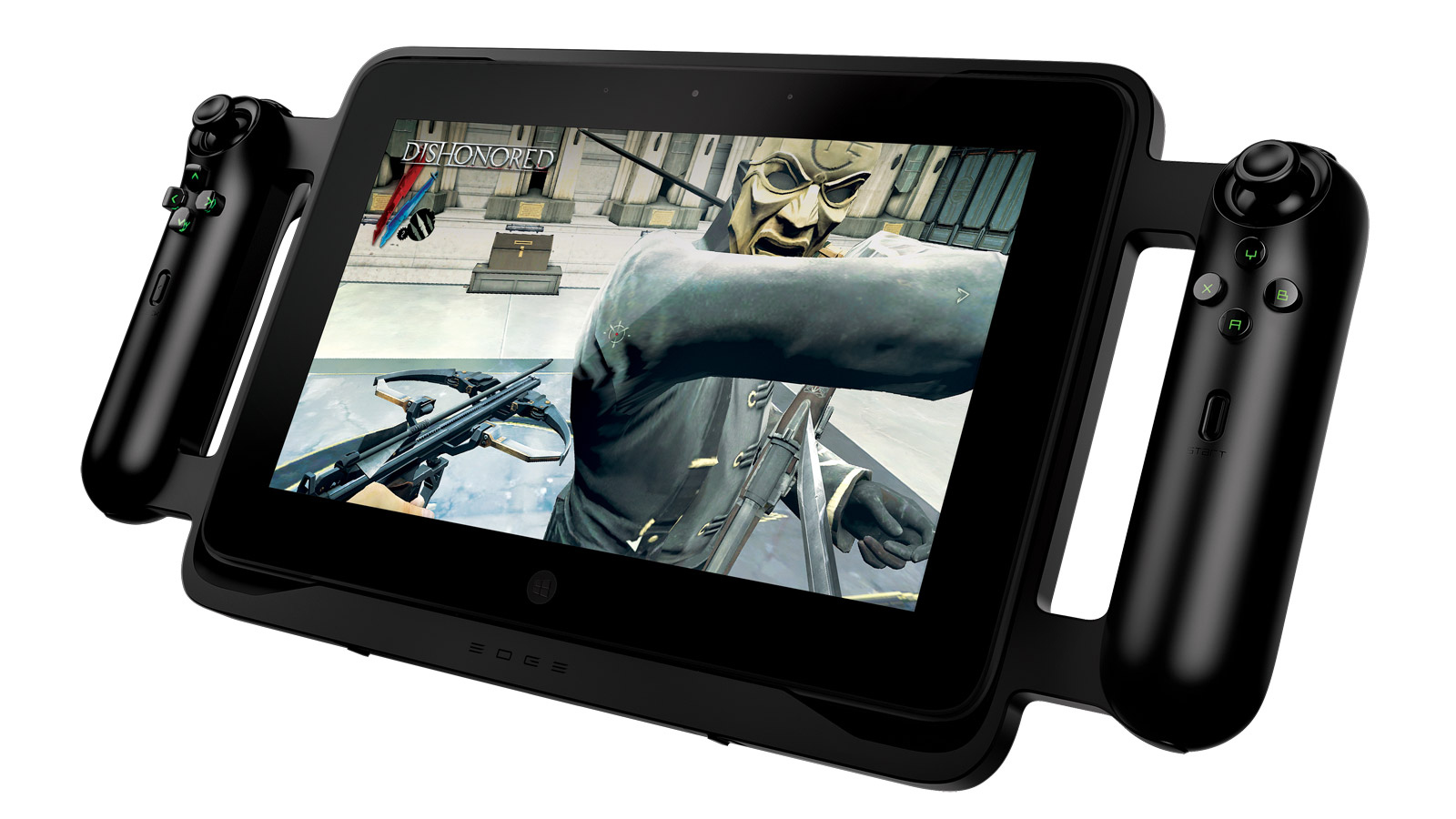The brand-name manufacturer of computer mice and laptops has re-announced a “super” tablet designed to replace both a laptop, a mobile console, and a home console at once.
A year ago, Razer announced a gaming tablet codenamed Fiona, which was to be released in the fourth quarter of 2012 on Windows 8. The main feature of the gadget was to be “handles” with buttons for playing PC projects and an Intel i7 processor.

Nothing has been heard about Fiona for a year. And so, as part of the next CES, Razer announced that the Edge tablet will be on sale in the first quarter of 2013. In fact, it’s still the same Fiona, only now the tablet is positioned somewhat wider.
According to the Edge manufacturing company, now it’s four devices in one.

Firstly, it is a tablet running on a full-fledged Windows 8. Secondly, if you attach a keyboard to it, it is a full-fledged 10.1-inch netbook. Thirdly, by hanging the same handles from Fiona, the user will receive a mobile console. And in the end, if you attach Edge to the installation station (dock), and the latter to the TV and gamepads, a home game console will appear on your hands.
In fact, Razer offers users to purchase a relatively thin candy bar. The full package includes Intel Core i7 Dual core at 1.9 Mhz, 8 GB of RAM, NVIDIA GT 640M LE video and up to 256 GB of flash memory.

On the face of a certain paradox. On the one hand, Razer wants to “get” into the stream, release its tablet. On the other hand, in the classical sense, Edge is not a tablet. This is a full-fledged PC with “canopies”. And it is for these “canopies” that the user is offered to overpay. At the same time, for $999, which Razer will ask for its tablet in the minimum configuration (i5, 4 GB of RAM and 64 GB of flash memory), you can immediately buy both a more powerful PC and a full-fledged tablet on iOS or Android.
The question is, is Edge needed in this case at all? Play for three hours in Far Cry 3 until the device runs out of battery? Perhaps, but will it be convenient?
